All-mountain lyže tvrdí, že jsou univerzálním řešením, ale je to pravda? V roce [2025] se debata rozhořívá. I když tyto lyže zvládají mix terénů slušně, často zaostávají v specializovaných podmínkách. Přicházejí Snowfeet* krátké lyže – kompaktní, hravá volba, která otřásá svahy svou přenosností, snadným použitím a zábavností. Tady je rychlý přehled:
- All-Mountain lyže: Skvělé pro různorodé terény, ale objemné, drahé (800–2 000+ $) a vyžadují speciální boty. Vynikají na upravených sjezdovkách a v hlubokém sněhu, ale postrádají přesnost na zledovatělých nebo POWDER-specifických podmínkách.
- Snowfeet*: Lehká, cenově dostupná (150–690 $) a vejde se do batohu. Perfektní pro rychlé zatáčky, sáňkování z kopců a stezky, bez strmé učící křivky.
Hlavní závěr: Pokud chcete rychlost a stabilitu na dlouhých sjezdech, držte se lyží. Ale pokud jde o pohodlí a hravou zábavu, Snowfeet* je ta správná volba. Menší může být prostě chytřejší. :)
Porovnání all-mountain lyží pro muže s šířkou středové části 90 mm na rok [2025] se SkiEssentials.com
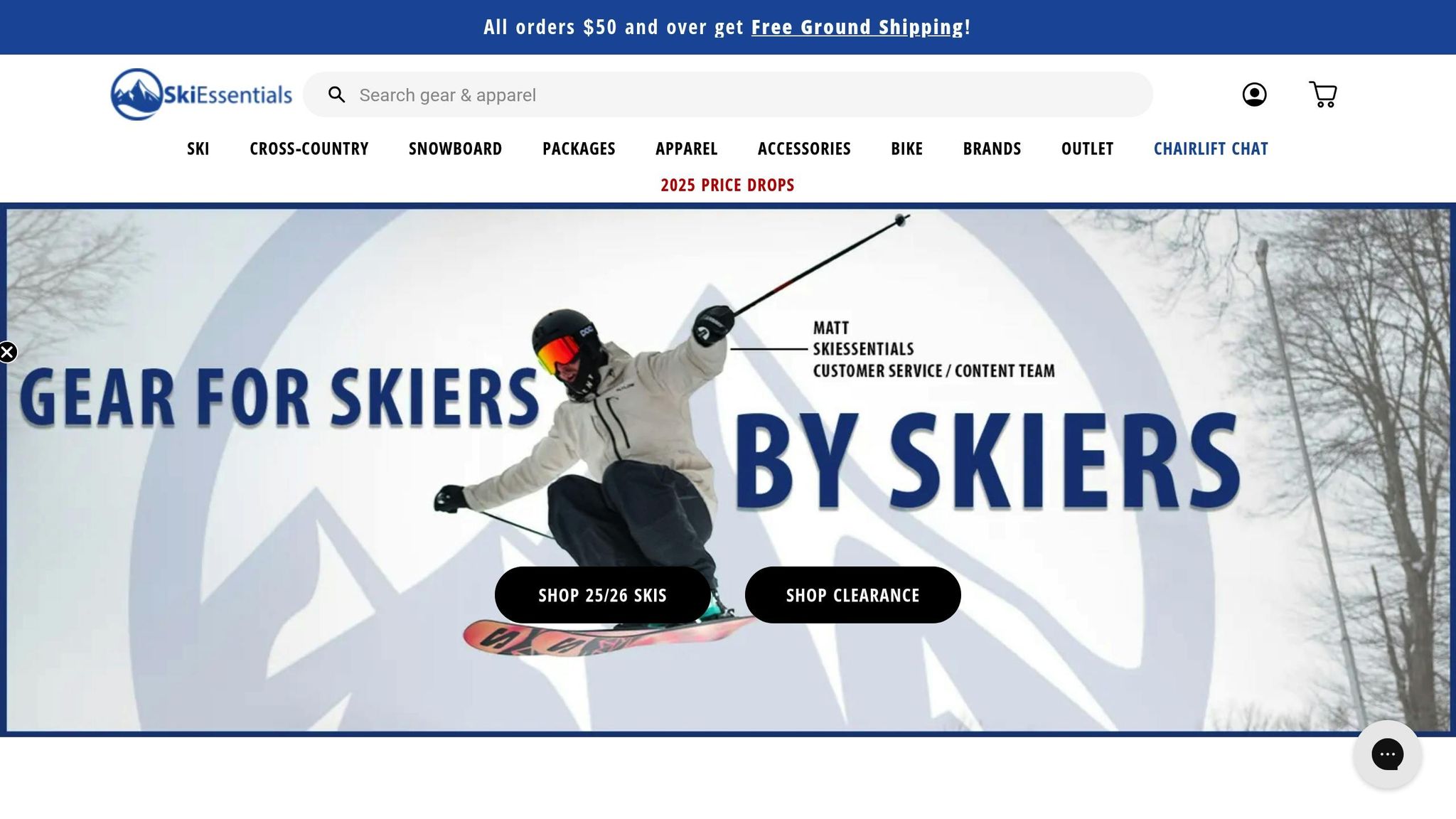
1. All-Mountain lyže
All-mountain lyže jsou jako švýcarský armádní nůž lyžařského vybavení – všestranné a připravené zvládnout různé podmínky. S šířkou pasu od 85 do 100 milimetrů jsou navrženy tak, aby zvládaly mix terénů docela dobře, i když v žádné oblasti příliš nevynikají. Odborníci upozorňují, že tento střední přístup znamená, že mohou být trochu příliš široké na upravené tratě a zase ne dost plovoucí pro hluboký POWDER.
Výkon na různých terénech
Když přijde řeč na upravené sjezdovky, užší all-mountain lyže jsou skvělé pro carving a držení hrany, zatímco širší modely nabízejí lepší plavání v POWDERu. Přesto však stále nemohou konkurovat bez námahy klouzajícím lyžím určeným přímo na POWDER. Vezměte si například Nordica Enforcer 94 – často je chválena za přilnavost na tvrdém podkladu a schopnost plynule fungovat při různých rychlostech. Ale na zledovatělých svazích all-mountain lyže obecně nedosahují té břitké přesnosti, kterou získáte u lyží speciálně navržených pro carving. Tento kompromis ukazuje, kde all-mountain lyže někdy zaostávají za svými specializovanějšími protějšky.
Problém "všeuměla"
Věc je taková: all-mountain lyže jsou dobré v mnoha věcech, ale málokdy nejlepší v jedné konkrétní. Například Salomon Stance 96 je solidní volba pro upravené sjezdovky, žlaby, misky a boule, ale když potřebujete špičkový výkon v konkrétní podmínce, specializované lyže obvykle vítězí. Podobně Völkl M7 Mantra je chválen pro svou stabilitu při vysokých rychlostech a přesné oblouky, přesto někteří recenzenti postrádají hravý pocit, který jiné lyže mohou nabídnout.
Reálné kompromisy
Kompromisy all-mountain lyží jsou nejvíce patrné v náročných podmínkách. Například Blizzard Anomaly 94 nabízí vynikající výkon na tvrdém sněhu a při vysokých rychlostech. Nicméně může být náročná pro lehčí nebo méně agresivní lyžaře, což ukazuje, že tyto lyže nemusí být ideální pro každého.
Odolnost a investiční úvahy
Při správné péči mohou all-mountain lyže vydržet mezi 200 a 300 dny na svahu, což z nich činí solidní dlouhodobou investici. Nicméně často platíte za všestrannost, a pokud často lyžujete ve velmi specifických podmínkách, můžete mít pocit, že nedostáváte nejlepší hodnotu za své peníze. Přestože jsou odolné, jejich "generalistická" povaha vás může nechat toužit po něčem více na míru.
Geografická omezení
Kde lyžujete, také záleží. Výkon all-mountain lyží se může lišit podle regionu. Lyže, která je perfektní pro ledové sjezdovky ve Vermontu, nemusí obstát v prašanem nabitém backcountry v Coloradu. Tato regionální proměnlivost nám připomíná, že i když jsou all-mountain lyže skvělou všestrannou volbou, nejsou univerzálním řešením.
2. Snowfeet* Short Skis and Skates
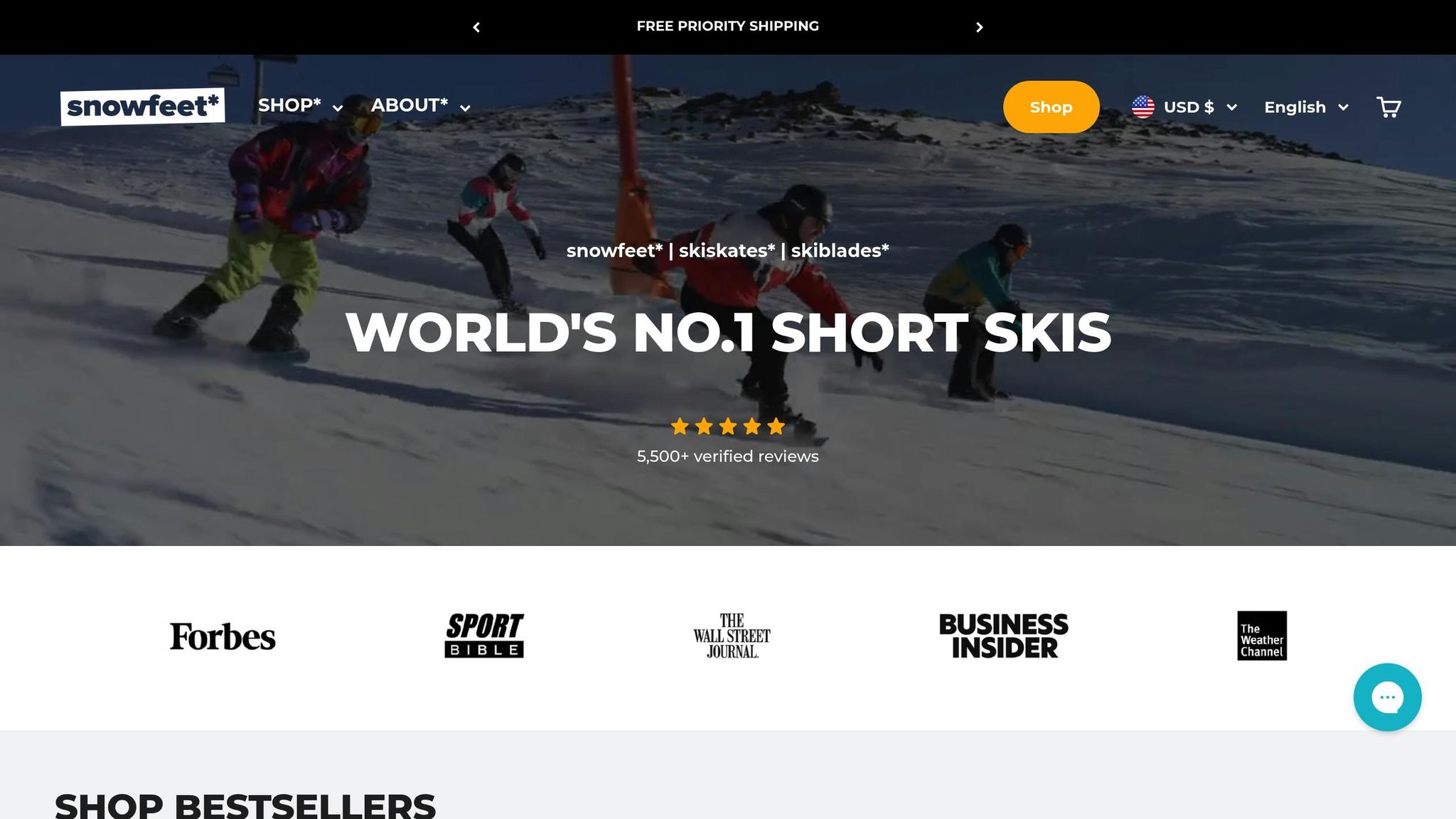
Snowfeet* přichází s novým pohledem na zimní sportovní vybavení a nabízí kompaktní, zábavnou alternativu k tradičním all-mountain lyžím. Zatímco all-mountain lyže se snaží zvládnout různé podmínky, Snowfeet* se zaměřuje na přenosnost, kontrolu a čistou radost. Modely jako Mini Ski Skates a Snowfeet PRO ukazují tento přístup svými elegantními designy a chytrými funkcemi, které přinášejí zcela novou atmosféru zimním dobrodružstvím.
Kombinace bruslení a lyžování
Snowfeet* spojuje to nejlepší z lyžování a bruslení do jednoho přenosného balíčku. Mini Ski Skates, měřící asi 15 palců, a Snowfeet PRO, přibližně 20 palců, jsou vyrobeny z materiálů vyztužených skelnými vlákny a mají nastavitelné vázání, které pasuje na standardní zimní boty. A tady je to nejlepší: jsou dost malé, aby se vešly do vašeho batohu. Žádné tahání těžkého vybavení - prostě vezměte a jděte.
Navrženo pro výkon
Na upravených sjezdovkách nebo v snowparcích Snowfeet* září svým obratným designem. Tyto skates jsou neuvěřitelně citlivé, což usnadňuje začátečníkům jejich zvládnutí a zároveň nabízí spoustu zábavy zkušeným lyžařům. Na rozdíl od tradičních lyží znamená jejich kratší délka méně starostí a více svobody pohybu.
Možnosti pro každý styl
Snowfeet* má něco pro každého. Skiskates, dlouhé asi 17 palců, jsou ideální pro ty, kteří mají zkušenosti s hokejovými bruslemi nebo kolečkovými bruslemi. Skiblades, v rozmezí od 26 do 39 palců, poskytují větší stabilitu pro ty, kteří chtějí trochu více podpory. Milovníci POWDER? Snowfeet POWDER, měřící asi 39 palců, je speciálně navržen pro hluboký sníh a dává nadšencům přesně to, co potřebují pro ty vysněné dny v prašanu.
Lehké a všestranné
Jednou z výrazných vlastností Snowfeet* je jejich lehkost a všestrannost. Ať už vyrážíte na běžecký výlet nebo zkoušíte triky v terénním parku, tyto kompaktní lyže vás nezklamou. Navíc je můžete používat s běžnými zimními botami - není třeba investovat do speciálních lyžařských bot. To je činí přístupnějšími širšímu publiku a snižuje bariéru vstupu do zimních sportů.
Předefinování zimní zábavy
Snowfeet* přepisuje pravidla zimních sportů. S délkami od 15 do 47 palců dokazují, že kratší může být lepší. Jejich inovativní designy dokonce otevírají cestu ke skiskatingu, nové disciplíně, která by se jednou mohla dostat až na olympiádu. Tím, že zpochybňují tradiční normy, si Snowfeet* vyřezává prostor pro více zábavy, svobody a kreativity na sněhu. Ať už je vaše zimní dobrodružství jakékoli, existuje model Snowfeet*, který ho udělá nezapomenutelným.
sbb-itb-17ade95
Výhody a nevýhody
Rozhodování mezi all-mountain lyžemi a Snowfeet* krátkými lyžemi je otázkou vyvážení vašich priorit. Pojďme to rozebrat podle použitelnosti, ceny a bezpečnosti.
All-mountain skis byly oblíbenou volbou zkušených lyžařů, kteří milují carving na upravených sjezdovkách. Nabízejí stabilní kontrolu při vysokých rychlostech a vynikají v hlubokém sněhu. Ale mají háček – jsou objemné, vyžadují specializované boty a potřebují hodně úložného prostoru.
Na druhou stranu Snowfeet* short skis nabízejí zcela odlišný zážitek. S délkou od pouhých 15 do 47 palců jsou dostatečně kompaktní, aby se vešly do batohu a fungují s vašimi běžnými zimními botami. To znamená, že není potřeba žádné další vybavení ani střešní nosič. Ať už vyrážíte na místní kopec, objevujete zasněženou turistickou stezku nebo sjíždíte sáňkařský kopec, Snowfeet* usnadňují přinést zábavu kamkoli.
Křivka učení je další klíčový rozdíl. Ovládnutí all-mountain lyží často vyžaduje lekce a praxi. Snowfeet* jsou však navrženy pro okamžitou zábavu – žádná strmá křivka učení, jen je připnout a vyrazit.
"Absolutní průlom! Jsou lehké, rychlé a neuvěřitelně zábavné na jízdu." – Nathan F.
Náklady jsou dalším velkým faktorem. Tradiční balíčky all-mountain lyží mohou stát od 800 do 2 000 dolarů nebo více. Snowfeet*? Začínají už na 150 $ a dosahují maximálně kolem 690 $, což je cenově dostupnější varianta.
| Vlastnost | All-Mountain Skis | Snowfeet* Short Skis |
|---|---|---|
| Cenové rozpětí | $800 - $2,000+ (kompletní vybavení) | $150 - $690 |
| Přenosnost | Objemné; vyžaduje lyžařské tašky nebo nosiče | Vejde se do batohu |
| Kompatibilita bot | Vyžaduje specializované lyžařské boty | Funguje s běžnými zimními botami |
| Křivka učení | Vyžaduje lekce a praxi | Snadné použití hned |
| Univerzálnost terénu | Nejlepší na upravené sjezdovky a resorty | Skvělé na svahy, stezky, sáňkařské kopce |
| Manévrovatelnost | Méně obratné na úzkých místech | Obratné a hravé pro rychlé zatáčky |
| Skladování | Vyžaduje hodně místa | Kompaktní a snadné skladování |
| Pohodlí při cestování | Může být obtížné na přepravu | Velmi snadné nosit kamkoliv |
Co se týče výkonu, tradiční lyže vynikají při rychlých sjezdech a v hlubokém sněhu. Snowfeet* se ale zaměřují na obratnost, což je ideální pro rychlé zatáčky a hravé lyžování. Jejich kompaktní velikost znamená, že budete muset upravit techniku zastavování oproti standardním lyžím.
Bezpečnost je další bod k zamyšlení. Snowfeet* jsou lehčí a kratší, což často znamená méně intenzivní pády, protože je menší páka. Tradiční lyže, i když nabízejí lepší kontrolu při rychlosti, mohou vést k složitějším pádům kvůli své délce.
Závěr
Tradiční all-mountain lyže jsou solidní volbou pro zvládnutí různých terénů v resortu. Ať už carvingujete na upravených sjezdovkách, navigujete proměnlivý sníh nebo dokonce sjíždíte mimo sjezdovky, lyže jako Volkl Mantra 88 (749,99 $) dokazují, že to zvládnou s lehkostí.
Na druhou stranu produkty Snowfeet* přinášejí něco úplně jiného – přenosnost a čistou zábavu. Místo snahy být všestranný se zaměřují na to, aby bylo lyžování přístupné a hravé. Ať už zvolíte kompaktní Snowfeet* Mini Ski Skates za 150 $ nebo 99 cm Skiblades od 490 $, získáváte vybavení, které je o obratnosti, pohodlí a skvělé zábavě na svahu.
Volba nakonec závisí na vašem stylu lyžování. Pokud preferujete rychlost, stabilitu a dlouhé sjezdovky, tradiční all-mountain lyže jsou těžko překonatelné. Ale pokud si ceníte rychlých zatáček, lehké výbavy a hravějšího zážitku, Snowfeet* short skis jsou fantastickou alternativou. Pro začátečníky, městské lyžaře nebo kohokoli unaveného z nošení těžkého vybavení je Snowfeet* revolucí.
Obě možnosti vyhovují různým potřebám, ale jedno je jasné: představa, že „delší je lepší“, začíná být zastaralá. Někdy menší opravdu znamená chytřejší. Lyžování není o tom dělat všechno slušně – jde o to excelovat v tom, co vám přináší radost. A přesně o to Snowfeet* jde.
Často kladené otázky
Jak si Snowfeet short skis vedou ve srovnání s tradičními all-mountain lyžemi na různých terénech?
Snowfeet krátké lyže přinášejí zcela novou úroveň obratnosti, kontroly a zábavy na svahu. Díky svému kompaktnímu designu vám umožňují snadno dělat rychlé a ostré zatáčky. To je činí ideálními pro tvrdý sníh, zledovatělý terén nebo úzké stezky – situace, kde by delší lyže mohly působit neohrabaně nebo být těžší na ovládání.
Navíc Snowfeet lyže zvládají různé sněhové podmínky jako profík. Ať už klouzáte v POWDERu nebo sjíždíte upravené tratě, poskytují živý a citlivý zážitek. Zatímco tradiční all-mountain lyže jsou stavěné pro všestrannost, Snowfeet se zaměřují na specializovaný, vzrušující zážitek. Jsou fantastickou volbou, pokud hledáte přesnost, přenosnost a nový rozměr zábavy na svahu.
Jsou Snowfeet krátké lyže vhodné pro začátečníky a jak se srovnávají s tradičními lyžemi při učení?
Ano, Snowfeet krátké lyže jsou skvělou volbou pro začátečníky! Jejich kompaktní velikost – obvykle kolem 25–47 palců – a lehká konstrukce je mnohem snazší ovládat ve srovnání s tradičními lyžemi, které obvykle měří mezi 59–79 palci. Tento menší design pomáhá začátečníkům cítit se více v kontrole, což usnadňuje budování sebevědomí a učení základů bez pocitu zahlcení.
S Snowfeet je proces učení mnohem plynulejší. Jejich kratší délka umožňuje rychlejší zatáčky, snadnější manévrování a celkově méně zastrašující ovládání. Naopak tradiční lyže mohou být pro začátečníky obtížné kvůli své hmotnosti a objemu. Snowfeet jsou navrženy tak, aby lyžování bylo přístupnější a zábavnější, což nováčkům poskytuje příjemný způsob, jak hned začít sjíždět svahy.
Jak se náklady a údržba Snowfeet krátkých lyží srovnávají s all-mountain lyžemi?
Pokud jde o náklady a údržbu, Snowfeet krátké lyže vynikají jako šetrná a bezproblémová alternativa k tradičním all-mountain lyžím. Typicky all-mountain sestavy vyžadují kombinaci lyží, vázání a specializovaných bot – investici, která se může rychle nasčítat. Naproti tomu produkty Snowfeet jsou mnohem šetrnější k vašemu rozpočtu a jednodušší na začátek.
Jejich minimalistický design je další velkou výhodou. S méně částmi na starosti je údržba hračka. All-mountain lyže, díky své větší velikosti a složitější konstrukci, často vyžadují pravidelné seřizování, voskování a občasné opravy. Kompaktní design Snowfeet nejenže snižuje potřebu údržby, ale také vám šetří čas a námahu. Pokud hledáte zábavný, všestranný a cenově efektivní způsob, jak vyrazit na svah, stojí za to zvážit krátké lyže Snowfeet.














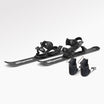






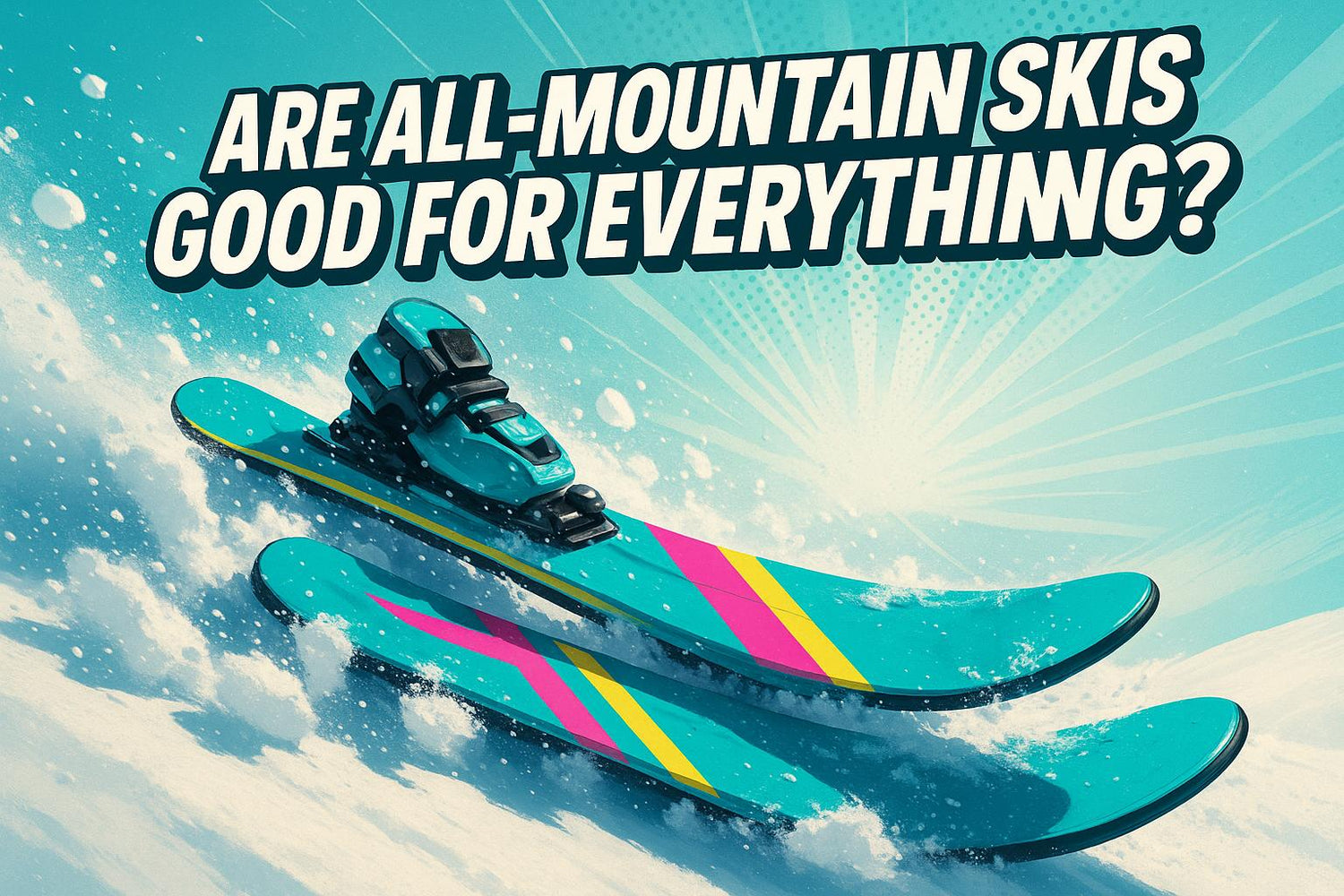
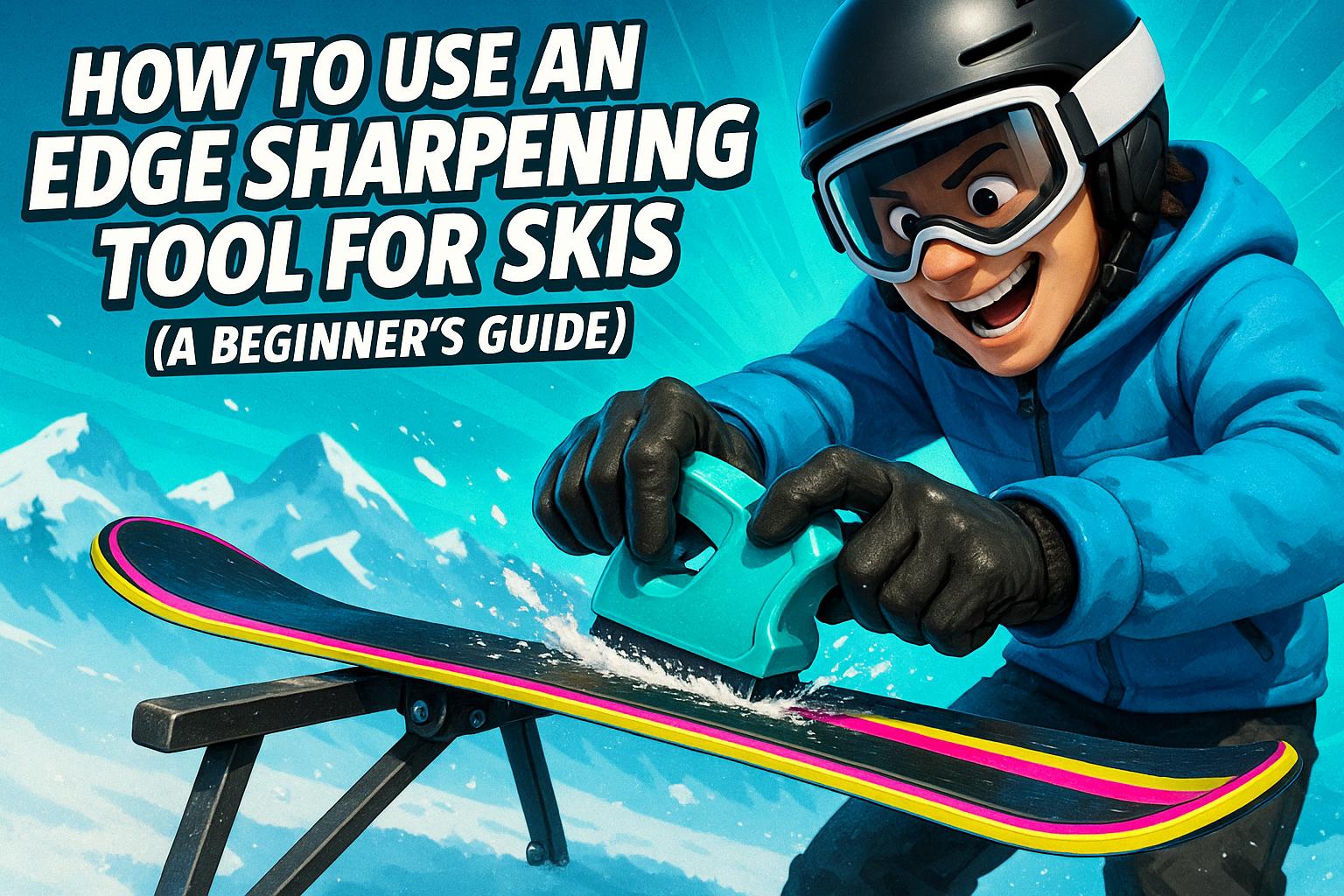
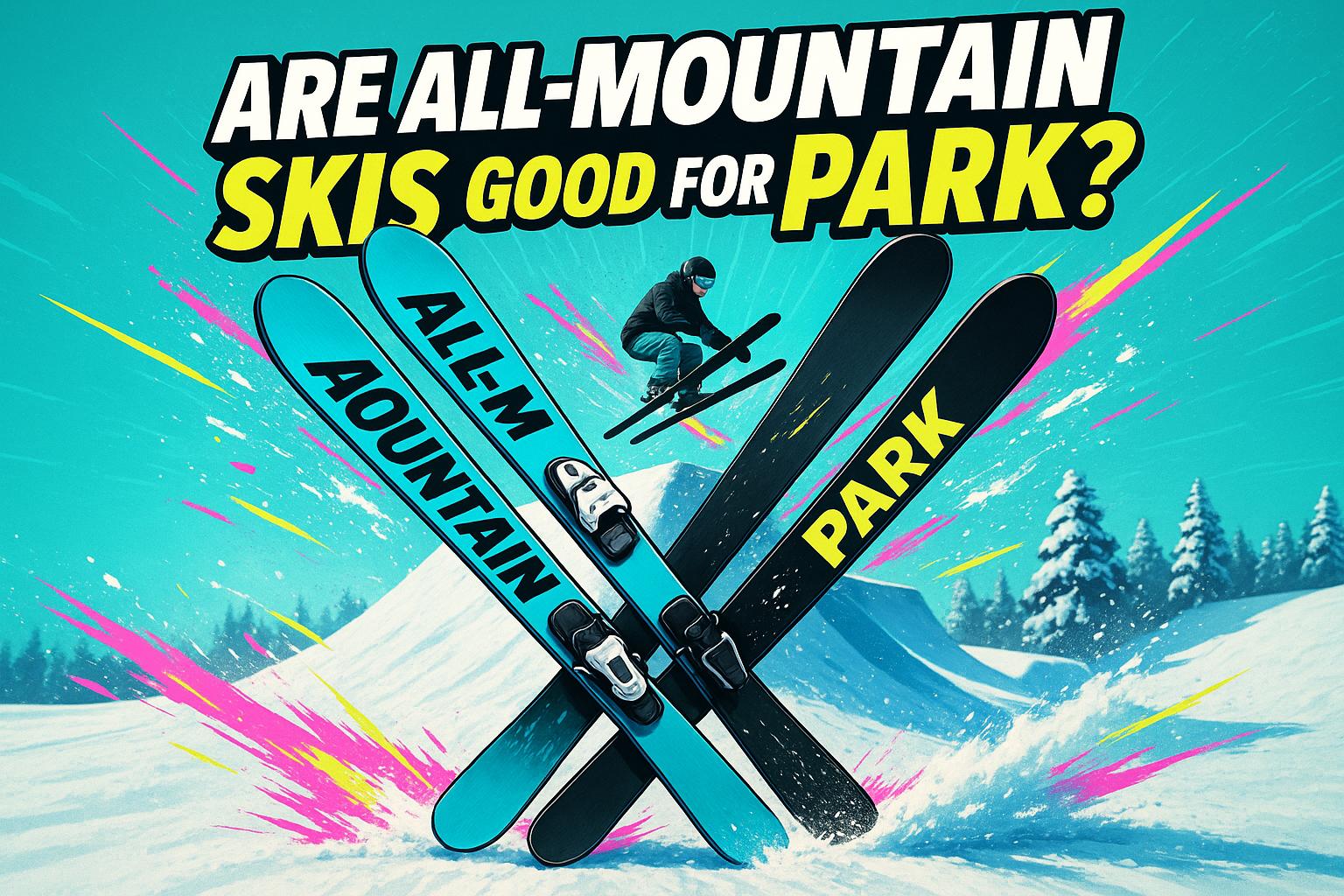










Zanechte komentář
Tento web je chráněn službou hCaptcha a vztahují se na něj Zásady ochrany osobních údajů a Podmínky služby společnosti hCaptcha.